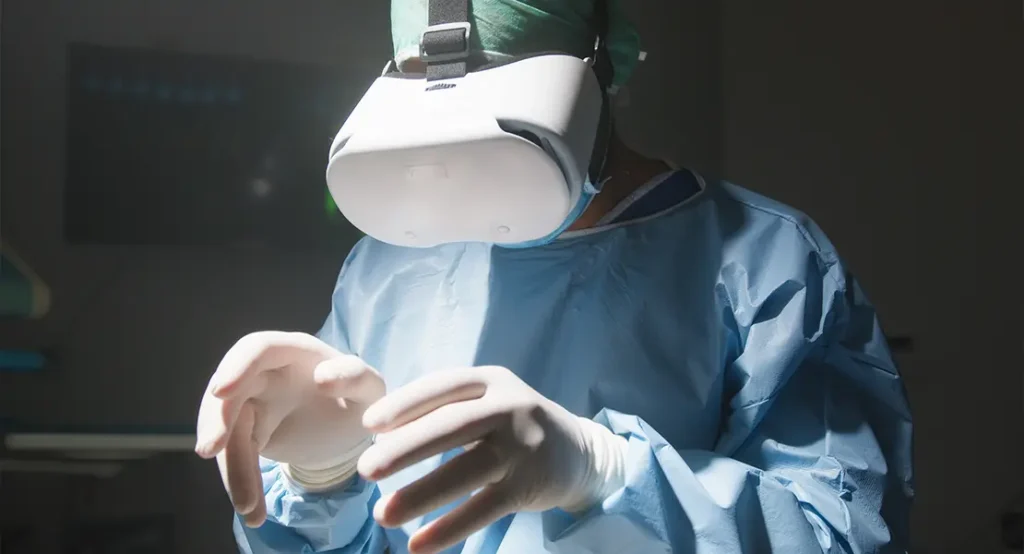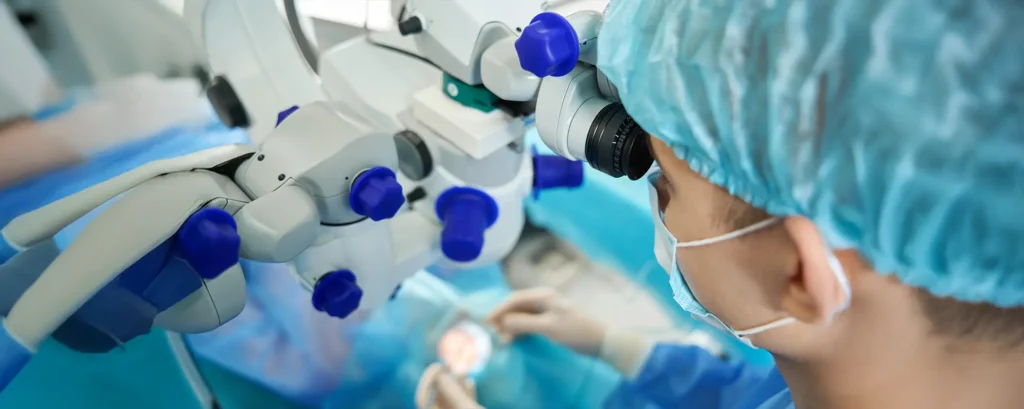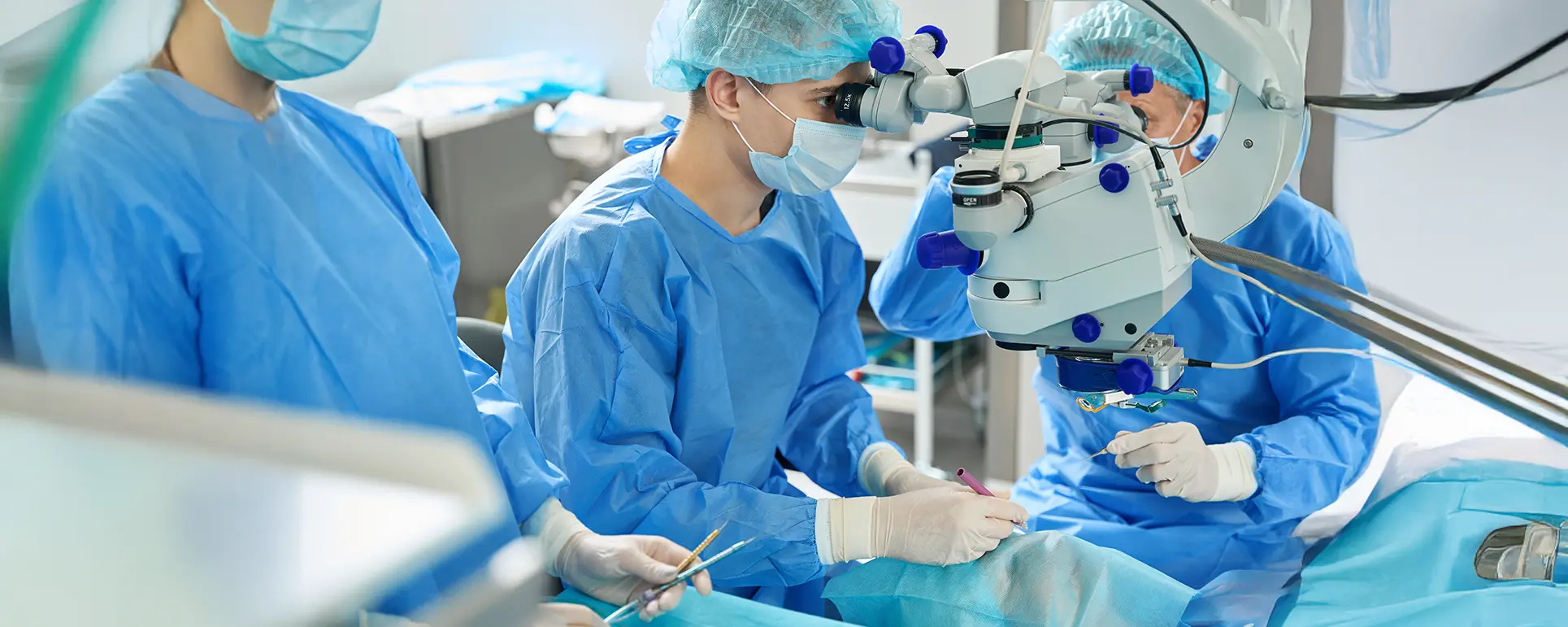When it comes to cataract surgery, we often focus on technology, technique, and the patient’s ocular health. But there’s a quieter variable in the operating theatre that rarely gets as much attention—surgeon handedness. Are left-handed surgeons at a disadvantage in a right-handed world? Does the side of the patient or microscope setup make any real difference to outcomes? These questions are no longer purely academic. With the rise of simulation-based training and ergonomic studies, we’re finally seeing a more complete picture of how handedness and positioning affect not just performance, but also long-term surgeon health and patient safety.
In this article, we’ll take a deep dive into the current research and real-world findings on the topic. Whether you’re a cataract surgeon refining your workflow, or a patient curious about what goes on behind the scenes, you’ll walk away with a fresh understanding of how these “invisible variables” influence the outcome of one of the most commonly performed procedures in the world.
Why Handedness Matters in Surgery
Defining Surgeon Hand Dominance
Hand dominance, or handedness, refers to the preferential use of one hand over the other for skilled tasks. In the general population, approximately 90% of individuals are right-handed. Among surgeons, the distribution is similarly skewed. In the context of cataract surgery—a procedure requiring fine motor control, depth perception, and bimanual coordination—handedness becomes more than a trivial detail.
Most surgical instruments, phacoemulsification units, and operating theatre layouts are designed for right-handed use. This default configuration creates an ergonomic and technical bias that may subtly favour right-handed surgeons while posing unique challenges for their left-handed counterparts.
Prevalence Among Ophthalmic Surgeons
Surveys across Europe and North America have shown that only around 10–12% of ophthalmic surgeons identify as left-handed. Some left-handed trainees report being encouraged, or even required, to learn to operate right-handed during training—especially in high-volume teaching hospitals where equipment isn’t easily reconfigured.
This adaptive strategy, while pragmatic, may have performance consequences. If left-handed surgeons are operating in a setup designed for right-handers, they may struggle more with instrument control, efficiency, and fatigue.
Ergonomics in Cataract Surgery: An Underestimated Factor
The Microscope Setup and Surgeon Posture
The physical layout of the operating room—including the microscope, foot pedals, instrument tray, and monitor—affects not just comfort but also control and safety. A poorly configured setup can lead to awkward postures, excessive neck and back strain, and diminished surgical finesse.
Right-handed surgeons typically sit temporal to the eye with their dominant hand controlling the phaco probe and the non-dominant hand stabilising the globe with a second instrument. For left-handed surgeons, mimicking this setup with reversed roles often requires repositioning equipment or sitting nasally—sometimes leading to suboptimal angles and awkward body positions.
Ergonomic studies using motion tracking and video analysis have found that surgeons forced to operate in non-ideal postures show higher rates of micro-tremors and slower manoeuvring, both of which can increase the risk of intraoperative complications.
Long-Term Impacts on Surgeon Health
Poor ergonomics don’t just affect one surgery—they accumulate over years. Studies have shown that ophthalmic surgeons have some of the highest rates of musculoskeletal complaints among all surgical specialties, with neck, shoulder, and lower back pain commonly reported.
Left-handed surgeons, or those operating on the side opposite their dominant hand, often report greater discomfort. This can translate to shorter surgical careers, more time off work, and even early retirement in extreme cases. It’s a reminder that the theatre should work for the surgeon—not the other way around.
Simulator Data: What Training Platforms Reveal

Performance Metrics from VR Surgical Simulators
With the advent of virtual reality cataract surgery simulators like the Eyesi Surgical platform, we’re now able to objectively assess how handedness affects performance. These simulators capture metrics such as instrument drift, capsulorhexis precision, and phaco efficiency—allowing for side-by-side comparisons between dominant and non-dominant hand usage.
Data from simulation-based studies indicate that surgeons perform significantly better when operating with their dominant hand. Time to task completion is often faster, tremor amplitude lower, and error rates reduced. This is particularly evident in high-skill phases like capsulorhexis and IOL insertion.
Bimanual Coordination and Adaptation
Interestingly, many left-handed surgeons trained in right-handed setups show near-equivalent performance over time, especially in tasks requiring bimanual dexterity. This suggests that adaptability is high, but not necessarily without cost. The adaptation period is often longer, and the mental workload—measured through eye-tracking and physiological stress markers—is higher.
So while handedness doesn’t have to limit success, it often shapes the learning curve and the pathway to competence.
Complication Rates: Does Handedness Affect Patient Safety?
Posterior Capsule Rupture and Other Metrics
One of the most feared complications in cataract surgery is posterior capsule rupture (PCR). Several retrospective studies have attempted to correlate surgeon handedness with PCR rates, but the evidence remains mixed.
Some suggest a slightly higher rate of complications in left-handed surgeons, particularly during early training phases when adaptation to right-handed setups is still underway. Others find no significant difference, especially once the surgeon has completed a sufficient volume of cases.
More recent studies highlight that it’s not handedness alone that correlates with complications, but rather whether the surgeon is forced to operate in an ergonomically compromised position. In other words, the problem is not being left-handed—it’s being left-handed in a right-handed setup.
IOL Placement and Wound Construction
Precision in tasks like IOL placement and wound construction also appears to be influenced by handedness, particularly when the surgeon is required to operate on the contralateral eye (e.g. a right-handed surgeon operating on the left eye). Some surgeons report more difficulty achieving symmetric incisions or lens centration when crossing the midline, although others compensate with practice and adjusted technique.
Ultimately, the link between hand dominance and surgical complication rates is nuanced. It’s not a simple matter of one being “better,” but rather about whether the operating conditions allow the surgeon to work in a way that matches their natural strengths.
Left-Handed Surgeons: Training, Adaptation, and Workarounds
Coping Strategies in Training
Left-handed surgeons in training often develop a number of adaptive strategies. These include learning to use both hands fluently, adjusting patient positioning to suit their dominant hand, or requesting reversed instrument trays where possible.
However, not all training programmes are equally accommodating. Some institutions still discourage significant setup changes due to operating theatre time constraints or equipment limitations. In such environments, left-handed trainees may be subtly (or overtly) nudged into using their right hand more frequently, even if it’s not their dominant side.
This introduces a learning bias that can affect confidence, speed, and precision—especially in the early stages of surgical training when mental workload is already high.
Instruments and Equipment for Left-Handed Use
Fortunately, some manufacturers now produce ambidextrous or left-handed versions of key surgical instruments. These include phaco sleeves, wound construction blades, and micro-instrument handles. While not universally available, they can make a significant difference in comfort and control for left-handed surgeons.
It’s also becoming more common for simulators to offer left-handed mode settings and for teaching hospitals to explore more inclusive ergonomic layouts. These incremental changes are helping level the playing field—one tray, one stool, one microscope arm at a time.
Surgeon Operating Position: Does Side Really Matter?

Temporal vs Superior Approach
In cataract surgery, the temporal approach (sitting to the side of the patient) is the most common configuration today. It allows for easier access and a more direct line to the anterior chamber. However, some surgeons—especially those with a background in superior (top-down) approaches—may still favour the latter in certain situations.
The side of approach can significantly influence comfort and control depending on the surgeon’s hand dominance. A right-handed surgeon sitting temporal to a right eye often finds the ergonomics ideal, while that same setup may require awkward wrist angles for a left-handed operator.
Switching sides between eyes, rather than using a uniform position, can help maintain ergonomics but requires equipment repositioning and may extend case times.
Contralateral Eye Challenges
Operating on the contralateral eye (e.g. a right-handed surgeon working on a left eye) can introduce subtle ergonomic inefficiencies. These include increased neck rotation, off-axis hand positioning, and higher rates of muscle fatigue.
Surgeons have developed a variety of techniques to address these challenges—such as angling the patient’s head slightly, repositioning the microscope tilt, or even switching seat position altogether. While these changes may seem small, they often lead to noticeable improvements in comfort and performance.
Gender, Height, and Other Variables: Compounding the Effect
How Other Factors Interact with Hand Dominance
It’s worth noting that handedness doesn’t exist in isolation. A surgeon’s height, body habitus, and even gender can interact with handedness to either alleviate or exacerbate ergonomic strain.
For example, shorter surgeons may find it more difficult to comfortably reach across the patient if operating from a non-dominant side. Female surgeons, who statistically report more ergonomic challenges, may experience increased cumulative strain if forced into awkward positions that don’t align with their handedness or physical build.
Recognising these compounded effects is crucial for creating a more inclusive, health-preserving surgical environment.
Frequently Asked Questions
Does it matter if my cataract surgeon is left-handed or right-handed?
Not particularly from a patient outcome point of view—what matters more is whether the surgeon is operating in a comfortable, well-configured setup. Both left- and right-handed surgeons can perform cataract surgery to a high standard. However, handedness can affect how the surgeon sets up the operating theatre, especially regarding microscope angle, patient position, and instrument tray layout. If the environment supports the surgeon’s dominant hand, the procedure is likely to be smoother and quicker.
Do left-handed surgeons have higher complication rates during cataract surgery?
There’s no strong evidence that left-handed surgeons have consistently higher complication rates—especially once they’ve completed their training. Some studies do suggest that left-handed trainees may face a steeper learning curve if they’re forced to adapt to right-handed setups. However, experienced left-handed surgeons often develop workarounds or request minor adjustments to the theatre layout to maintain safety and precision.
Why is surgeon posture and positioning such a big deal in cataract surgery?
Because the procedure involves prolonged periods of fine, repetitive movements under a microscope, posture and positioning play a huge role in both surgical control and long-term musculoskeletal health. A poorly adjusted seat, awkward hand position, or excessive head tilt can lead to micro-errors in surgery and chronic pain over time. Ergonomics isn’t just about comfort—it’s about preserving surgical performance over a lifetime.
Can a right-handed surgeon struggle when operating on the left eye, or vice versa?
Yes, it can be slightly more challenging depending on the surgeon’s approach and the theatre setup. For instance, a right-handed surgeon operating on a left eye may have to reach across the midline or adopt an off-centre posture, which can reduce comfort and increase fatigue. That’s why many surgeons vary their seat position or adjust the microscope angle when switching eyes, so they can maintain symmetry and control.
Are there surgical tools designed specifically for left-handed ophthalmologists?
They do exist, but they’re not always widely available. Some manufacturers produce left-handed versions of commonly used instruments like keratomes, phaco tips, and forceps. Additionally, newer phacoemulsification consoles and training simulators often include settings to accommodate left-handed use. Many left-handed surgeons, though, become proficient with standard tools simply through adaptation and practice.
Do operating room layouts typically favour right-handed surgeons?
In most hospitals, yes. The standard configuration for cataract surgery—including instrument tables, foot pedals, and assistant positions—is often designed for right-handed use. Left-handed surgeons usually need to request adjustments or find creative workarounds, especially during training. Fortunately, there’s growing awareness of the need for more flexible, surgeon-friendly operating environments.
Can poor ergonomics really shorten a surgeon’s career?
Unfortunately, yes. Many ophthalmologists develop musculoskeletal issues over time, including neck, back, and shoulder pain. These problems are particularly common in surgeons who regularly operate in awkward positions or who are not given ergonomic support early in their training. That’s why tailoring the operating environment to a surgeon’s handedness and physical build isn’t just a luxury—it’s a necessity for a sustainable surgical career.
Final Thoughts: Designing for the Surgeon, Not Just the Surgery
If there’s one takeaway from the growing body of research on handedness and operating position, it’s this: cataract surgery performance isn’t just about skill—it’s also about fit. Fit between surgeon and setup. Fit between equipment and natural motion. And fit between training and individuality.
Surgeons bring their own anatomy, neurology, and learning style into the operating theatre. When we design systems, training environments, and tools that honour those differences—instead of suppressing them—we improve not just the surgical outcome, but the surgeon’s career longevity and satisfaction.
If you’re a patient considering cataract surgery, these details might sound behind-the-scenes. But they matter. Because when your surgeon is comfortable, confident, and well-supported, you’re more likely to have a smooth, successful surgery.
And if you’re a left-handed surgeon out there making it work in a right-handed world—just know, the research has your back.
References
- Al-Sabti, H., Kumar, C.M., & Dodds, T.J. (2008). Ergonomics in ophthalmic surgery. British Journal of Ophthalmology, 92(3), pp.315–318.
Available at: https://bjo.bmj.com/content/92/3/315 - Saleh, G.M., Gauba, V., & Mitra, A. (2007). Objective assessment of microsurgical skills in ophthalmology: validity and reliability of virtual reality simulator. Investigative Ophthalmology & Visual Science, 48(1), pp.146–151.
Available at: https://iovs.arvojournals.org/article.aspx?articleid=2124521 - Kaleem, M. et al. (2020) ‘Survey of musculoskeletal disorders among US ophthalmologists’, Digital Journal of Ophthalmology, 26. Available at: https://pmc.ncbi.nlm.nih.gov/articles/PMC8031955/ (Accessed: June 12, 2025).
- Winebrake, J.P., McMahon, J.F. & Sun, G. (2020) ‘The utility of virtual reality simulation in cataract surgery training: a systematic review’, Journal of Academic Ophthalmology, 12(2), e221–e233. Available at: https://www.thieme-connect.com/products/ejournals/html/10.1055/s-0040-1718555?update=true (Accessed: June 12, 2025).
- Selvander, M. & Åsman, P. (2013) ‘Cataract surgeons outperform medical students in Eyesi virtual reality cataract surgery: evidence for construct validity’, Acta Ophthalmologica, 91(5), pp. 469–474. Available at: https://portal.research.lu.se/files/3099963/3690978.pdf (Accessed: June 12, 2025).

